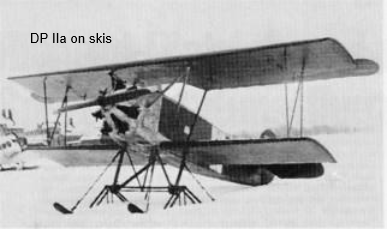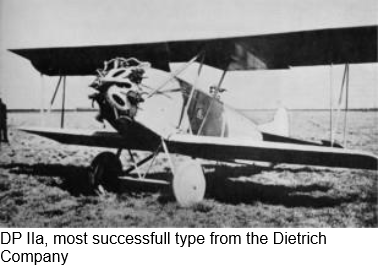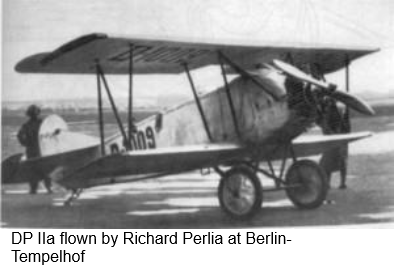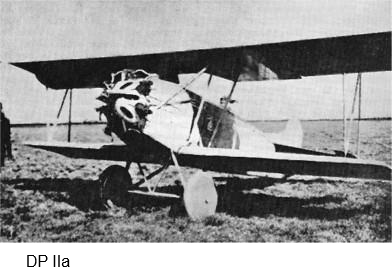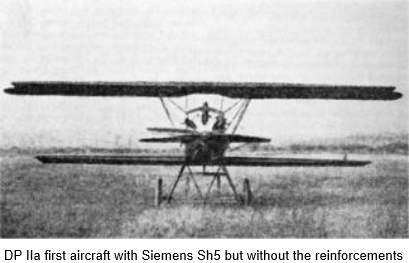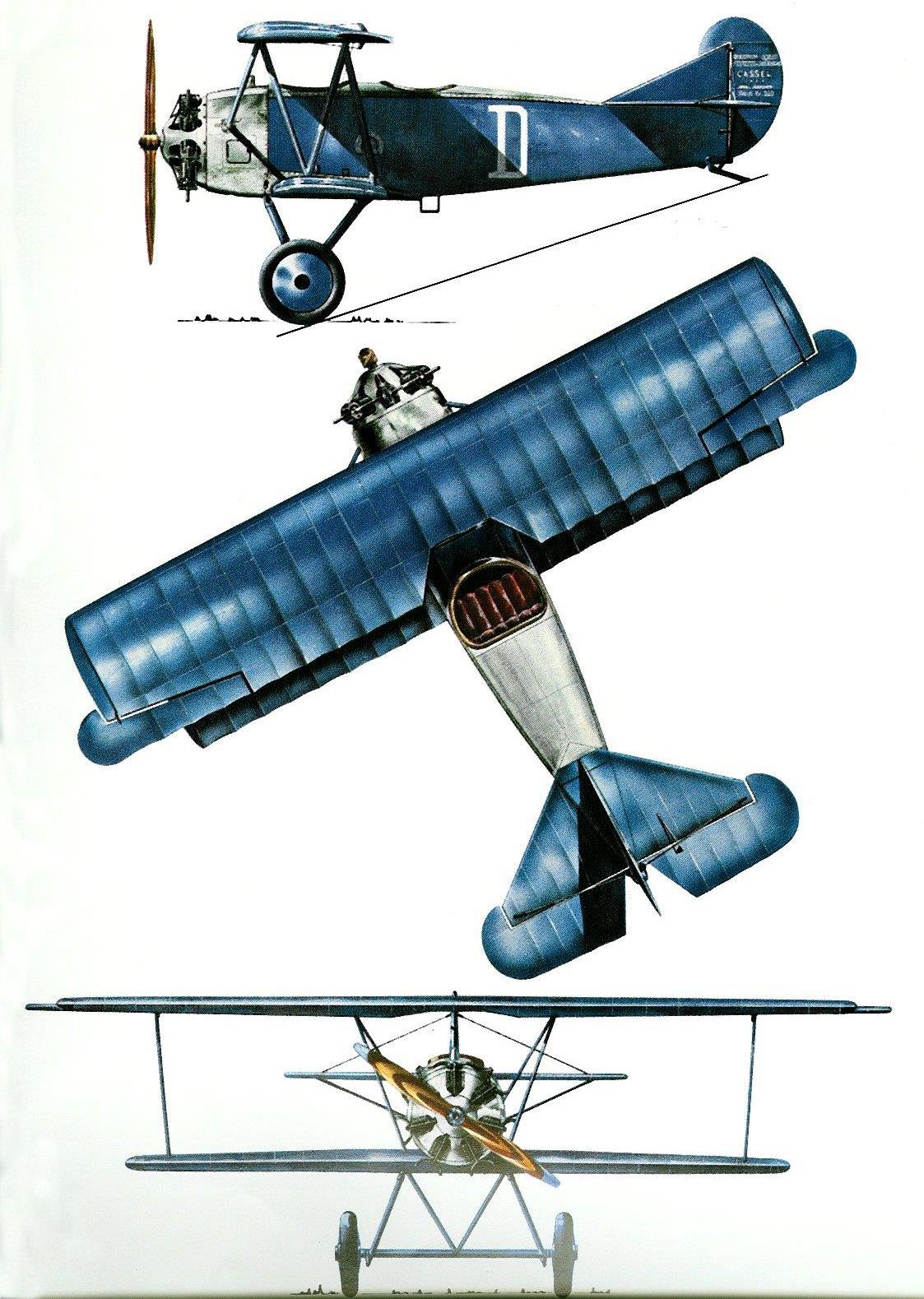

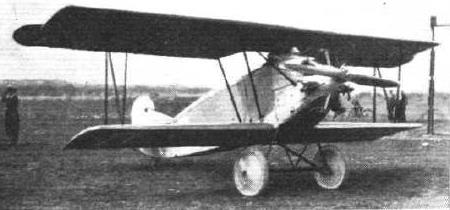
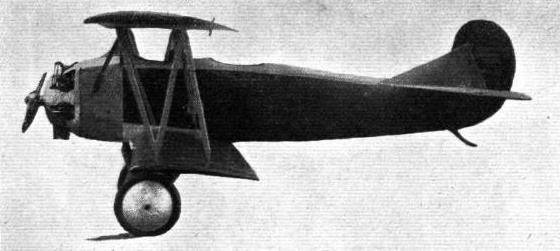
| Type | DP II two seat trainer | DP IIa two seat trainer |
| Engine | 1 Siemens Sh 4 | 1 Siemens Sh 5 |
| Dimensions | Length 5.90 m, height 2.50 m, span 7.20 m, wing area 15.50 m2, aspect ratio 3. | Length 5.97 m, height 2.88 m, span 7.76 m, wing area 16.32 m2, aspect ratio 3.4 |
| Weights | Empty 340 kg, fuel 70 kg, oil 7 kg, load 220 kg, flying weight 560 kg, wing loading 36.1 kg/m2 | Empty 420 kg, fuel 70 kg, oil 7 kg, load 240 kg, flying weight 660 kg, wing loading 40.5 kg/m2 |
| Performance | Max. speed 130 km/h, cruising speed 120 km/h, climb 2.4 m/sec, to 1000 m 7 min., service ceiling 2800 m, range 450 km, landing speed 60 km/h | Max. speed 160 km/h, cruising speed 130 km/h, climb 2.0 m/sec, to 1000 m 8 min., service ceiling 3200 m, range 500 km, landing speed 65 km/h |
